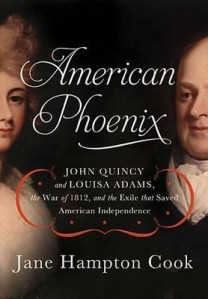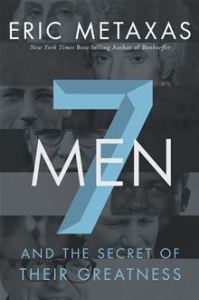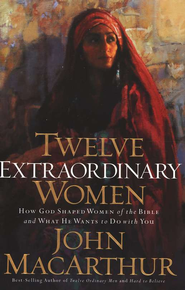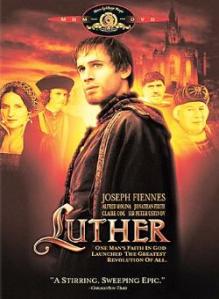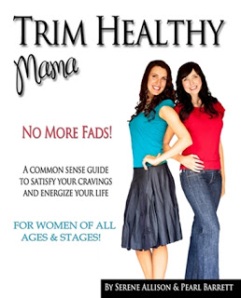
Posted by Bambi
I didn’t want to read this book. Although I kept more padding after my last pregnancy than I’ve ever kept in my life, I still didn’t want to read it. Why?
- It overwhelms me to think of colossal diet changes.
- I have no interest in diet fads that eliminate certain food groups, like fruit and bread. I’ve been there, done that and bought the ebook.
- I like chocolate. I like muffins. And don’t even talk to me about coffee.
- I don’t jump on bandwagons easily. If it’s on the top ten list anywhere, I’m suspicious.
- And even if I could get past all that, I knew huge diet changes simply had to transfer into a higher grocery bill. I’m feeding an army and I have to be careful.
Nope, no interest. Leave me alone, healthy mamas. I’m doing just fine, K? I’ll just keep enjoying my coffee and learn to love my new love handles.
I changed my mind.
I changed it because I heard testimony after testimony from women I respect who said just implementing a few of the changes the authors recommend would leave me with more energy. I was officially intrigued. By the end of the day I usually feel like a boneless chicken. More energy sounded fabulous. I put in an interlibrary loan request for the book because I thought it was too expensive.
Our library was slow.
I contacted the authors and they gave me a free book to review. Yes, there are advantages to blogging. And so here is my take on Trim, Healthy Mama.
The book opens describing four different types of eaters.
They are:
1. A raw food purist
2. A meat-n-taters gal
3. A woman who is called drive-thru Sue
4. A whole-grains fanatic
Incidentally, I have been all of these eaters at one time or another. You will probably find yourself in one of these women too.
Explanations
There is an explanation of what exactly is causing most of us ladies to be fat and unhealthy (insulin) and why we’re not doing ourselves any favors by eating banana smoothies (yes, even if they are green) or pounds of apples. I admit it, I was suspicious. But the authors make a compelling case for working with our changing metabolism as women. Sure, give the kids the apples and oranges. But moms should eat fruits that keep our insulin levels balanced and not on a roller coaster all the time. Didn’t know your insulin levels were on a roller coaster? Me neither. But I learned a lot.
A Little History: Atkins Vs. South Beach Diet
In the 80’s and 90’s everyone told us fat was bad. Everything on the shelf sported “fat free!” Trouble was, the sugar content was higher to compensate for the loss of taste. Enter the Atkins’ Diet. Dr. Atkins said eat all the protein and fat you want but no carbohydrates. We all stocked up on bacon and eggs and consumed loads of those nasty pork skins that smell like you-know-what when you open the bag.
A few years later came the South Beach diet, which I know nothing about because I was still doing pork skins. But I hear that it was similar to Atkins, they just advised less fat.
The authors of Trim, Healthy Mama conclude that there are some truths to both of these diets in that they help control blood sugar and insulin surges. But eating this way is hard to maintain because who wants to be deprived of bread and sweets forever? The authors show us how to indulge in some sweets and healthy breads (with real butter, of course) without spiking our blood sugar. High blood sugar = insulin spikes. And it’s all about the insulin, gals.
Most importantly, they never scolded me for drinking coffee, but actually encouraged it.
So there went two of my hang-ups with why I didn’t want to read the book.
What about the cost of the food?
I have been eating with some of the Trim, Healthy suggestions for three weeks now. I have not noticed any change in my grocery bill. While the authors do make recommendations for some special, you-can-only-get-this-online ingredients, they are not needed for most of the recipes.
The purpose of learning to eat this way is not to lose weight, but to be healthy and have energy. However, I have lost that excess baby weight plus a few pounds. I have read countless testimonies of people who have significant weight to lose, and are doing so by implementing these changes. Even better, I have more energy due to exercising the way the authors suggested.
I Just Said the “E Word”
I almost skipped the exercise chapter because I despise exercising. But again I learned a lot. Statistics were given to prove that our current trends of exercising are not doing us much good to burn fat. That means that elliptical machine I torture myself with on rare occasions probably isn’t helping a lot. Well. Except for the sermons I listen to on my iPod as I sweat. But all that energy doing cardio exercise could have been better used with short bursts of energy (like ten minutes’ worth. Who can’t handle ten minutes?) and strength training.
In other words, a ten minute run with intermittent sprints, will do us more good than a one hour steady cardio session.
Sweets and Chocolate
The authors recommend using Stevia, Truvia or NuNaturals as your new sweeteners because of their low glycemic index (meaning they don’t cause a significant increase in blood sugar.) However, I tried using Truvia and it made me sick. Stevia tasted terrible. Although I didn’t try NuNaturals (I’m not going to buy “special food” remember?), I searched out the Trim, Healthy Mama Facebook page and discovered others were using Coconut Sugar with success as well.
I strolled over to my hand-dandy Wal-Mart and there it was on the shelf just sitting there smiling at me. I have made the book’s sweet recipes using Coconut Sugar and have continued to maintain the weight loss. Coconut sugar (which isn’t actually sugar from a coconut) has a higher glycemic index than Stevia, but nowhere close to table sugar.
But truth be told, eating the THM way (that it to say—becoming aware of insulin spiking foods and/or combinations of them and avoiding them) has made me crave sweets less.
The Cost
I held off buying this book because of the price, but: it is worth the price. If you can’t stomach the $35 then you could try the digital version which is only $20. You can buy it here. It is like buying three books (619 pages!!) because the first part of the book explains the why for the diet changes, the next portion explains the how and the third portion is full of recipes. There are also chapters on hormone imbalances and how to cure them naturally, an exercise chapter (which remember, I almost skipped, but was so pleasantly surprised with the recommendations…that work!) and also a chapter on marital intimacy.
Who the Book is For
This book is for married women. Trust me. The end.
Who the Diet is For
The diet is for everyone: husband, children and even grandma included. This isn’t a fad diet, but changes that can be made to your liking and pace, that are overall a healthier way of eating. Even if you don’t have weight to lose, you will learn a lot about how to eat by reading this book.
I do believe the book to be balanced, although as with every book we should read it with radars at attention (discernment). The two sisters writing are very different, one is more of a purist and really educated me at times, while the other uses the microwave and helps us identify short-cuts if we want to use them. ( I like her.) The ladies write in a conversational style and I especially like that they were humble enough to share their past mistakes and extremist tendencies that they now regret.


